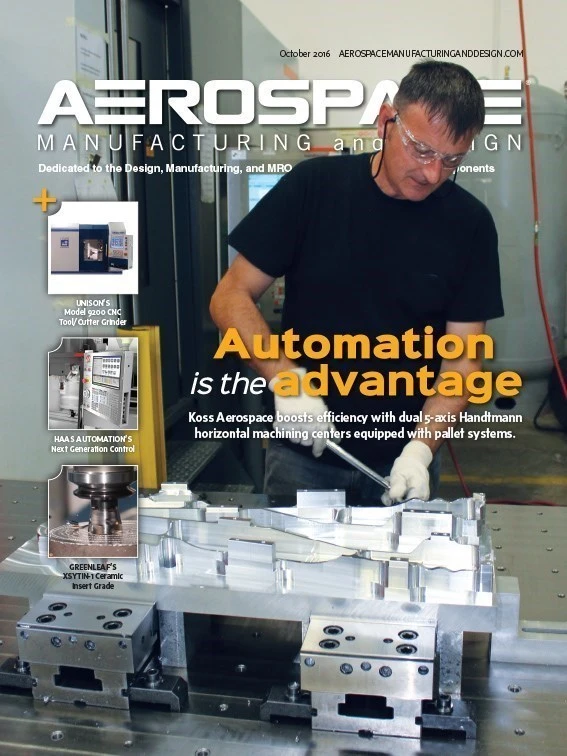
There is outstanding promise for additive manufacturing (AM) for critical metal parts in the aerospace industry. However, quality and geometry challenges threaten to hold back growth and cost-effectiveness. Regarding quality, AM still exhibits variability between runs, between machines, and across time. As for geometry, AM can only realize a dimensional accuracy of about 100µm with a positioning accuracy of about 20µm, and the surface finish is very rough for aerospace requirements. Geometry must be measured by expensive post-process inspection such as X-ray computed tomography scanning. These challenges create a need for a new quality assurance standard for aerospace companies.
Santa Fe, New Mexico’s Sigma Labs Inc. developed its In-Process Quality Assurance (IPQA) methodology for process control and quality assurance to addresses these concerns. In contrast to post-process quality assurance, IPQA is designed to measure the attributes of the AM process in real time or near-real time and sense process variations before defects.
IPQA for AM
Sigma Labs’ PrintRite3D product suite for AM incorporates IPQA technology into hardware and software to enable serial production for metal AM technology sooner than would otherwise be possible. PrintRite3D software applications address three fundamental problems:
- Assuring metal integrity, product quality
- Assuring product’s as-built geometry
- Increasing productivity, or AM speed
The evolution of AM from prototyping to manufacturing in production runs is being led by aerospace. Yet traditional quality systems rely heavily on after-manufacture inspection techniques that lack strong statistical reliability in small-lot manufacturing. Post-production, non-destructive test instruments are either ineffective or cost-inefficient. PrintRite3D develops actionable quality and manufacturing process control data in real time. When no flaws are detected, it can provide manufacturers and their end-users part-by-part quality certification, backed up by a file of supporting data.
PrintRite3D’s Sensorpak hardware suite includes photodiodes, a non-contact pyrometer, and a high-speed data processing unit that can be sold with an AM manufacturing machine or retrofitted. The hardware measures in-process state variables associated with an AM process.PrintRite3D software includes:

PrintRite3D Inspect is for in-process inspection of metallurgical properties, layer-by-layer, part-by-part. Sensor data establishes in-process metrics for each metal or alloy. It provides manufacturing engineers with part quality reports based on rigorous statistical analysis of manufacturing process data. It allows for the interrogation of suspect part data and can be used for process improvement and optimization.
PrintRite3D Contour is for in-process monitoring of part geometry. The layer-by-layer geometry measurement tool compares as-built to original CAD models. It includes optics, a mechanical system, and a data path to image two-dimensional melted powder.
PrintRite3D Analytics is for trend, correlation, and exploration tasks. The software and data warehouse links critical in-process data across multiple builds, machines, and fabrication sites through time. Users can access in-process and post-process data during the entire product life cycle.
The software and embedded algorithms process large amounts of layer-by-layer data and inform operators of the quality compliance status of each part in a build. Sigma Labs’ data analysis and quality algorithms link its analysis to root-cause metallurgy to determine the granular quantification of part conformance to requirements such as tensile strength. Contour software measures each part’s adherence to the configuration specification of internal channels and external form. Manufacturers may use the Sigma Labs data stream to direct machine performance adjustments.

PrintRite3D enables a single AM machine to operate at very high-quality yields, measuring the product of the manufacturing equipment rather than just equipment settings, and apply the data to adjust equipment controls in real-time. Manufacturers can offer in-process quality monitoring to certify and document the quality of all parts that pass continuous inspection. It is a reliable method for assuring and documenting uniform quality assurance of a single part manufactured using different AM machines and global locations.
The technology is suited to meet industry needs, allowing metal AM to be used in manufacturing safety-critical or performance-critical metal parts. And, as a greater number of AM machines are connected and become cloud-based, PrintRite3D technology is compatible with highly networked, cloud- or web-based Industrial Internet of Things (IIoT) implementation.
Aerospace applications
IPQA enables rapid qualification and certification in the aerospace sector. Sigma used AM technology to enhance Parabilis Space Technologies’ existing ability to fabricate a thruster in response to a NASA Small Business Innovation Research (SBIR) development contract for in-space chemical propulsion. The component is a 100 lbf-class reaction control system (RCS) thruster using cryogenic liquid oxygen (LOx) and liquid methane propellants printed from Inconel 718. AM built as a monolithic part including the injectors, combustion chamber, and nozzle; the component features reduced cost, weight, and design cycle time.
Parabilis engineers are furthering development of the thruster toward flight-ready design, including expanding AM implementation and performing additional hot-fire testing to evaluate a design with improved operational envelope. Future NASA LOx/methane engine projects include deep-space interplanetary exploration and in-site resource utilization such as outer solar system moons and Mars. Terrestrial uses would include a like-propellant attitude control thruster or kick stage for LOx/methane launch vehicles currently under development.
Sigma Labs won a contract from GE Aviation as part of an America Makes AM research project. Funded by the National Additive Manufacturing Innovation Institute (NAMII), the project covers Sigma Labs’ IPQA process. The contract showcased PrintRite3D technology across multiple platforms, specifically high-volume, high-quality aerospace components.
Sigma Labs also received a contract from Honeywell Aerospace as part of a Defense Advanced Research Projects Agency (DARPA) award to develop an integrated computational material engineering (ICME) framework to accurately predict the properties of AM metal components. Honeywell Aerospace’s target markets for AM technology include commercial aerospace, unmanned aerial vehicles (UAVs), electronic housings, engine components, hinges and brackets, and spacecraft components.
Sigma Labs also collaborated with Aerojet Rocketdyne to use PrintRite3D to streamline AM processes under another America Makes initiative. In 2014, the company successfully tested an engine entirely made with 3D printed parts and capable of producing 5,000 lb of thrust.
Also with Aerojet Rocketdyne, Sigma Labs received a contract for a non-exclusive license of PrintRite3D for a contract with the U.S. Air Force to define more efficient processes for qualifying AM components and to be evaluated for liquid-fueled rocket engine applications. The Air Force initiative is part of a plan to transition from Russian-made RD-180 engines used on the Atlas V launch vehicle.
Most recently, Sigma Labs received a contract from aerospace and defense supplier Woodward Inc. to deliver and install the complete suite of its PrintRite3D software modules onto a new EOS M290 machine for Woodward’s Aircraft Turbine Systems Division in Zeeland, Michigan.
Given the promise of IPQA and the degree to which it has already started to be incorporated into various AM processes being tested within the aerospace sector, the future appears bright for this technology. It could serve as a way of enhancing quality control and ushering in an era of cheaper, faster, and more advanced aerospace AM component manufacturing.
Sigma Labs Inc.
About the author: Mark J. Cola is president and CEO of Sigma Labs Inc. He can be contacted at cola@sigmalabsinc.com or 505.438.2576.
Get curated news on YOUR industry.
Enter your email to receive our newsletters.
Explore the October 2016 Issue
Check out more from this issue and find your next story to read.
Latest from Aerospace Manufacturing and Design
- NASA offers free high school engineering program this summer
- Pemamak's PEMA Vision 3D software
- Aerospace Industry Outlook - Spring 2025, presented by Richard Aboulafia
- Panama’s National Air and Naval Service selects Embraer Super Tucano
- Model 5770 Linear Abraser
- #42 Lunch + Learn Podcast - Quell Corp
- RECARO Aircraft Seating showcases advanced comfort solutions at AIX 2025
- Mitutoyo America’s MiSTAR 575 Shop Floor CNC CMM







